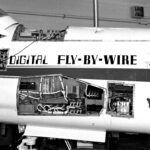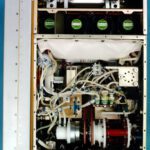Space Technology Hall of Fame Inductees
The Space Technology Hall of Fame® comprises many extraordinary innovations — all derived from or significantly improved by space research or exploration. To nominate a technology, please visit our Nominate a Technology page to learn more about the Space Technology Hall of Fame® selection criteria.
Search Filters:
Dense non-aqueous phase liquids (DNAPLs) are chemical compounds that can contaminate soil and groundwater to the point of irreparability.
Read MoreCollaboration between NASA, the United States Army and private industry led to both significant improvement and an important new application for a remarkable medical device called ResQPOD. Successfully used by NASA to treat orthostatic intolerance – a condition of suddenly lowered blood pressure that occurs upon rapid reentry into Earth’s atmosphere – ResQPOD quickly increases…
Read MoreSpills and leaks of all kinds threaten water resources around the world. Today a new technology provides safe and permanent removal of petroleum-based pollutants from water. The basic delivery system grew out of NASA biological encapsulation research and the orbital production of microspheres so uniformly precise they provide calibration standards for scientific and industrial equipment.…
Read MoreHeart disease is the leading cause of death in the United States. Space technology is now helping diagnose and monitor treatments for hardening of the arteries before it causes heart attacks and strokes. Advanced video imaging software developed at NASA’s Jet Propulsion Laboratory provides remarkably accurate and imagery of our solar system and has laid…
Read MoreMillions of infants and adults around the world benefit from nutrition technology that began with space research. In the early 1980s NASA’s Closed Environment Life Support System program explored the use of microalgae as a food supply, oxygen source and waste disposal catalyst on long duration interplanetary missions. Scientists continued work independently after the completion…
Read MoreVehicle design has seen radical improvements thanks in large part to NASA aerodynamics and fluid dynamics research. As vehicles move down the road at highway speeds, they must ‘push’ the air in front of them out of the way. Large trucks in particular must move huge quantities of air, creating high pressure zones around the…
Read MoreBeginning with research at NASA’s Jet Propulsion Laboratory in the 1960’s, Eagle Eyes technology is the result work to develop protection for human eyesight from the harmful effects of solar radiation. Specifically, ultraviolet and blue-light rays which are known to contribute to cataract and age-related macular degeneration. NASA researchers looked to nature for a solution.…
Read MoreThe early 1960’s saw embedded computers advance sufficiently to be used in Apollo spacecraft. By the late 1960s, NASA Flight Research Center (previously Dryden Flight Center, now Armstrong Flight Research Center) engineers began work to replace mechanical flight-control with digital fly-by-wire technology. Support came from Neil Armstrong who backed the transfer of a U.S. Navy…
Read MoreFor decades, medical researchers have taken advantage of the unique aspects of microgravity to develop or grow materials that cannot be made on Earth. For example, cell cultures grown on Earth are only two-dimensional because gravity causes the cells to sink within their growth medium, whereas normal cells grow three-dimensionally in the body. In the 1980s, NASA researchers studying this phenomenon had to halt their work when the Space Shuttle Challenger tragedy grounded the Shuttle fleet, thus blocking access to the microgravity of space. As an alternate, they developed a device called the “rotating wall bioreactor” to grow human cells in simulated weightlessness.
Read MoreGeospatial technology using Earth-imaging satellites has reshaped our view of the world, improving national security, logistics and navigation, mapping, disease and natural disaster tracking and a myriad of other applications.
Read More




